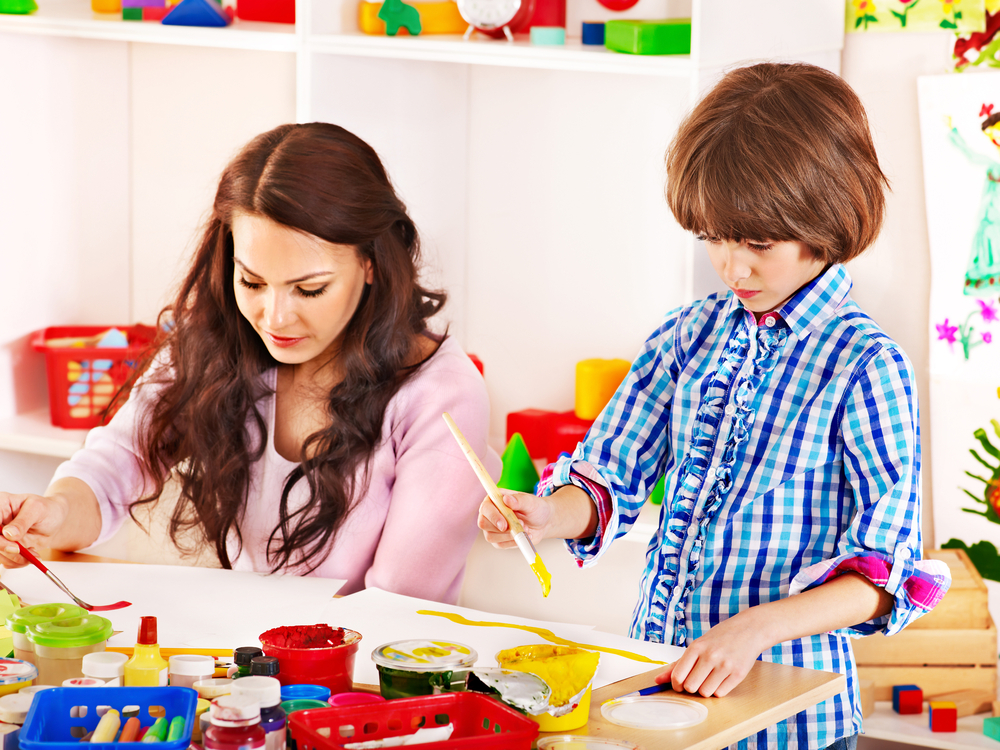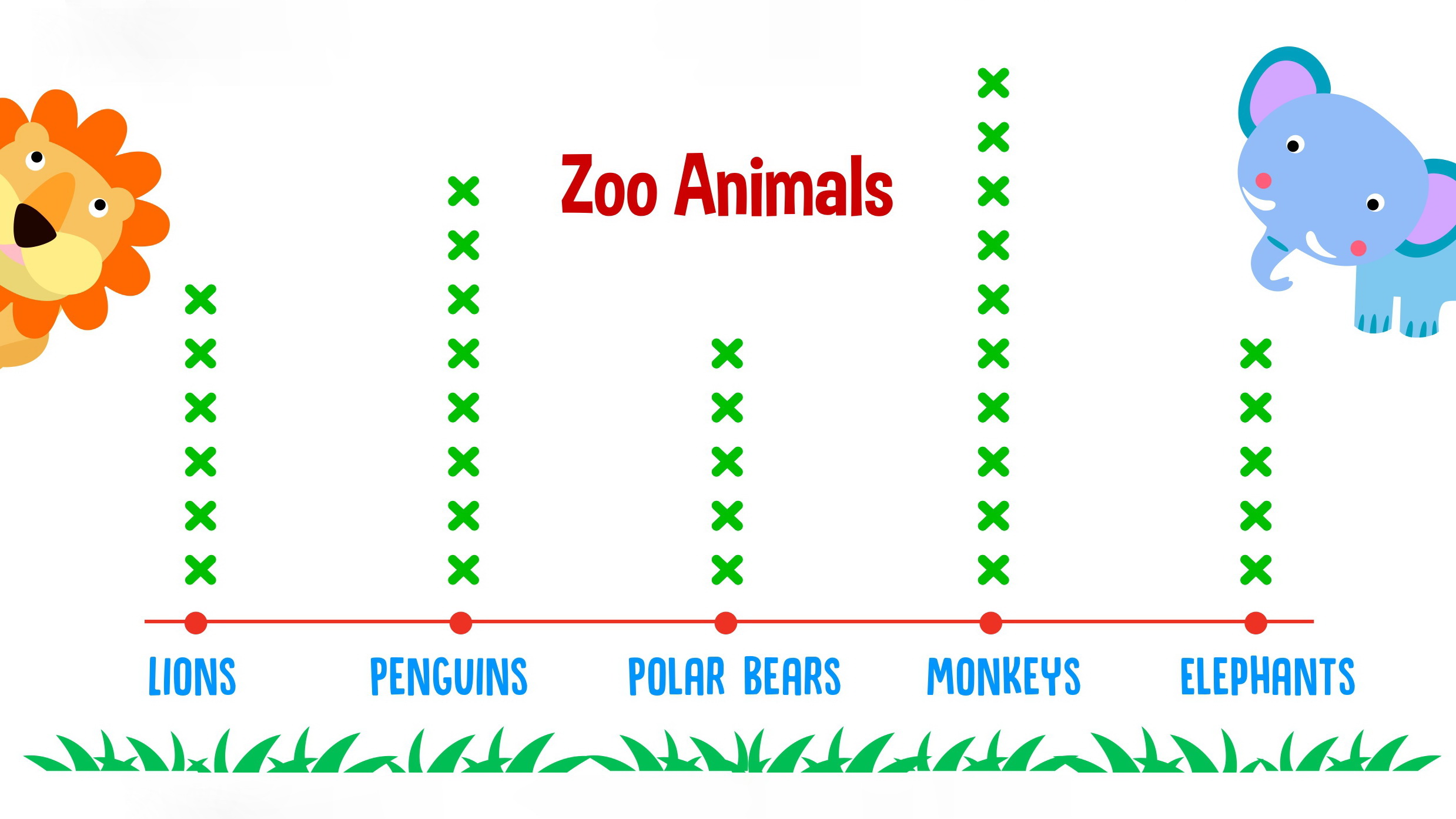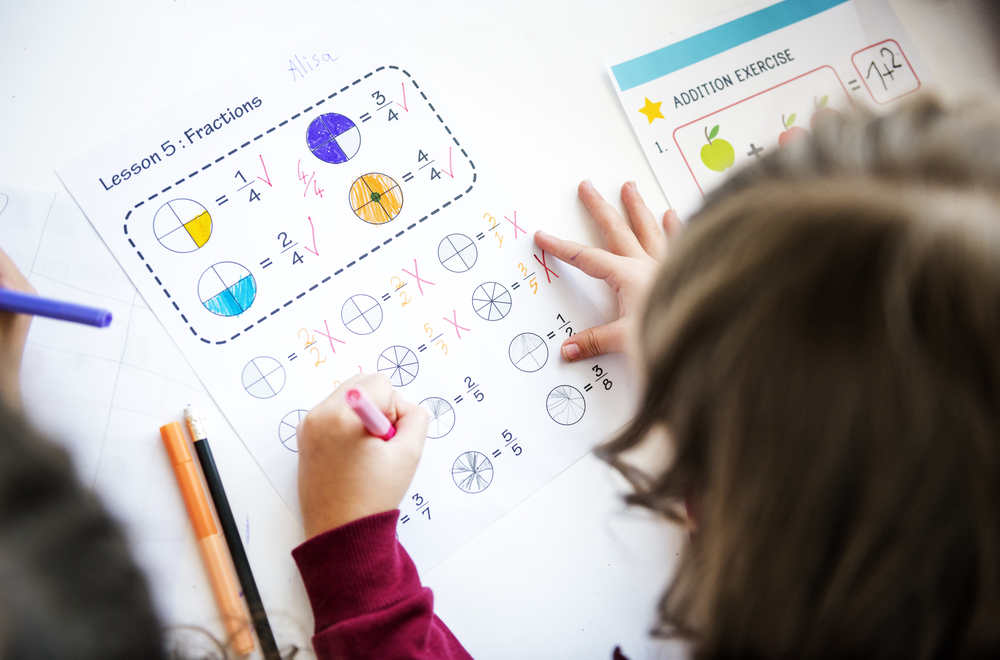Strategic thinking development Normal Worksheets for Ages 7-9
7 filtered results
-
From - To
Enhance your child's cognitive abilities with our Strategic Thinking Development Worksheets, designed specifically for ages 7-9. These engaging, printable worksheets encourage critical thinking and problem-solving skills through fun activities and challenges. Kids will explore intuitive strategies and learn to approach puzzles systematically, paving the way for better decision-making in the future. By nurturing strategic thinking at an early age, children will boost their confidence and academic performance. Our worksheets are perfect for home learning or as supplemental material in the classroom. Join us in fostering a love for learning and empowering young minds to think critically and creatively!
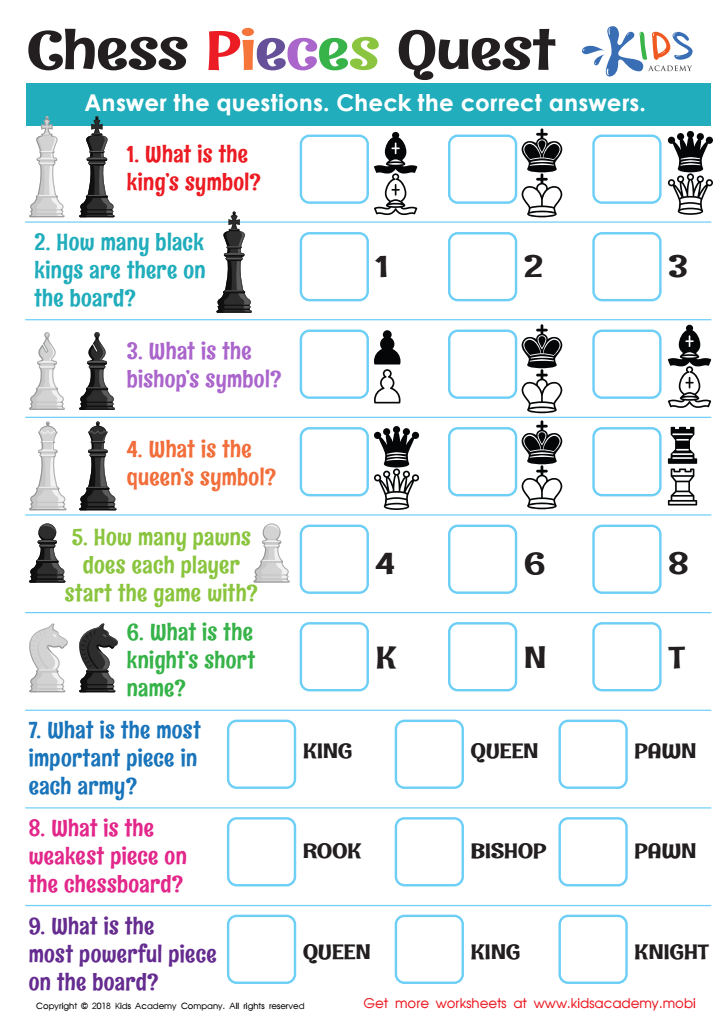

Chess Pieces Quest Worksheet
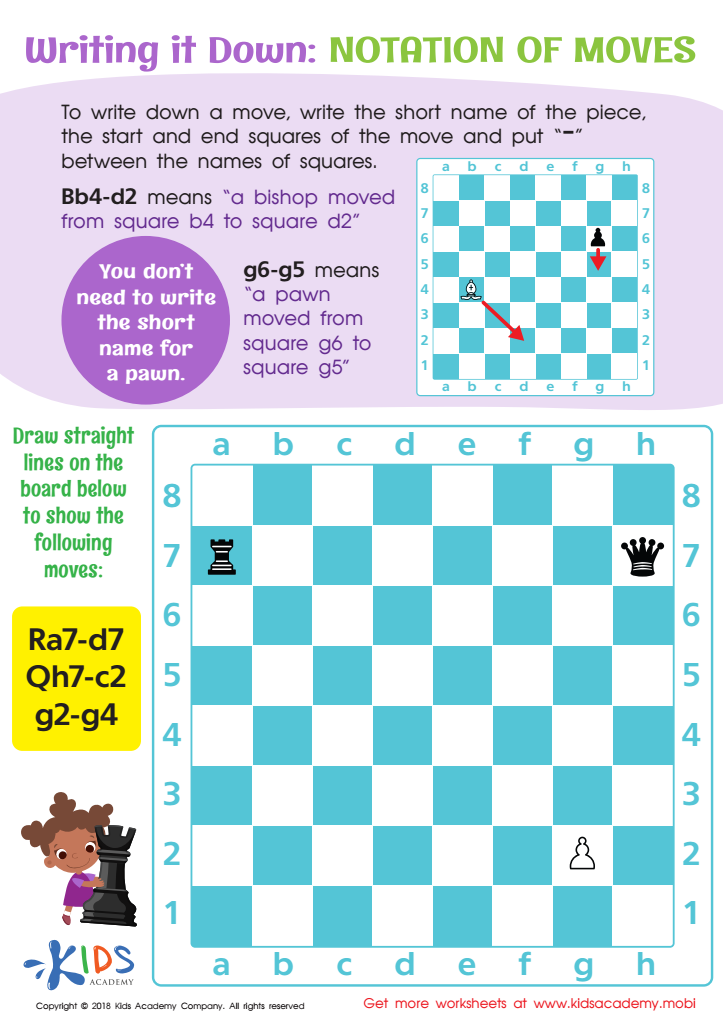

Notation of Moves Writing it Down Worksheet
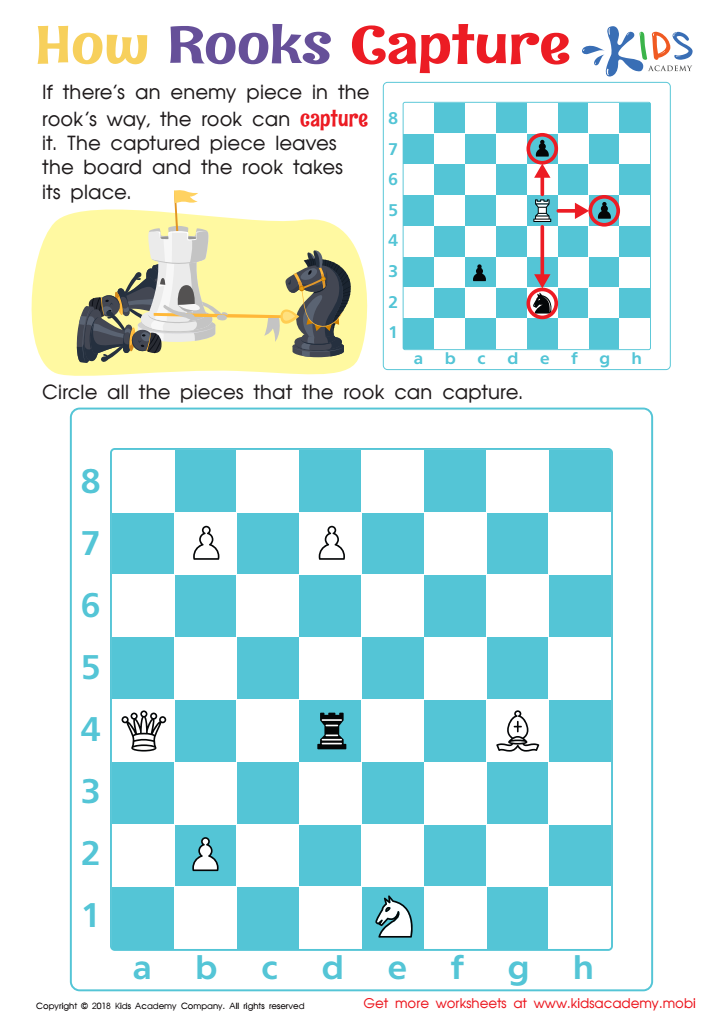

How Rooks Capture Worksheet
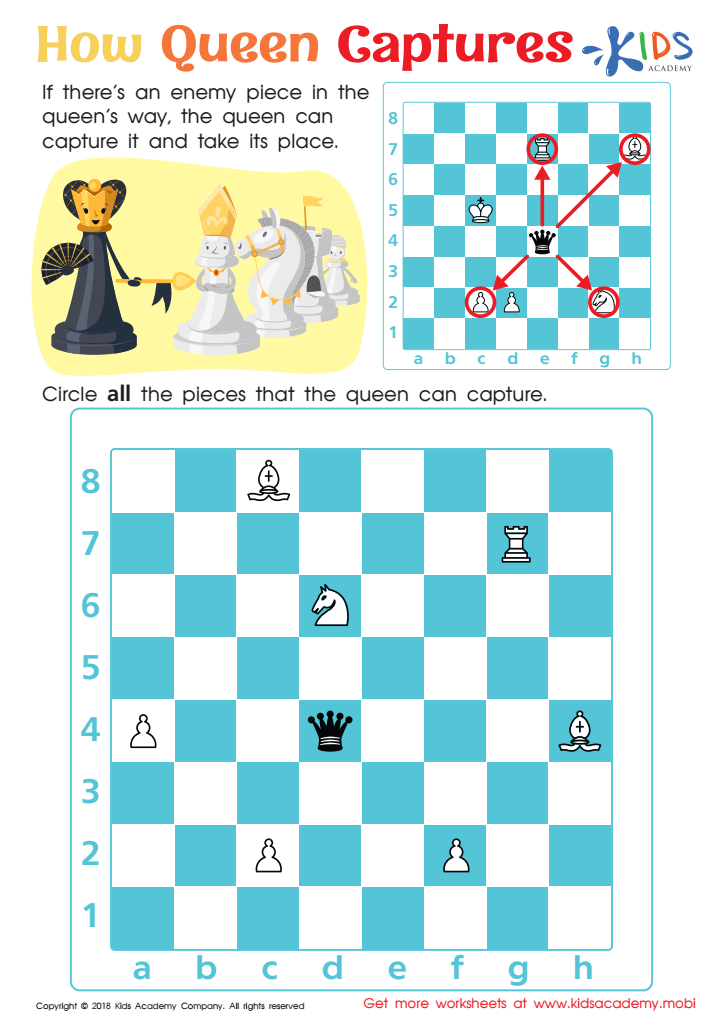

How Queen Captures Worksheet
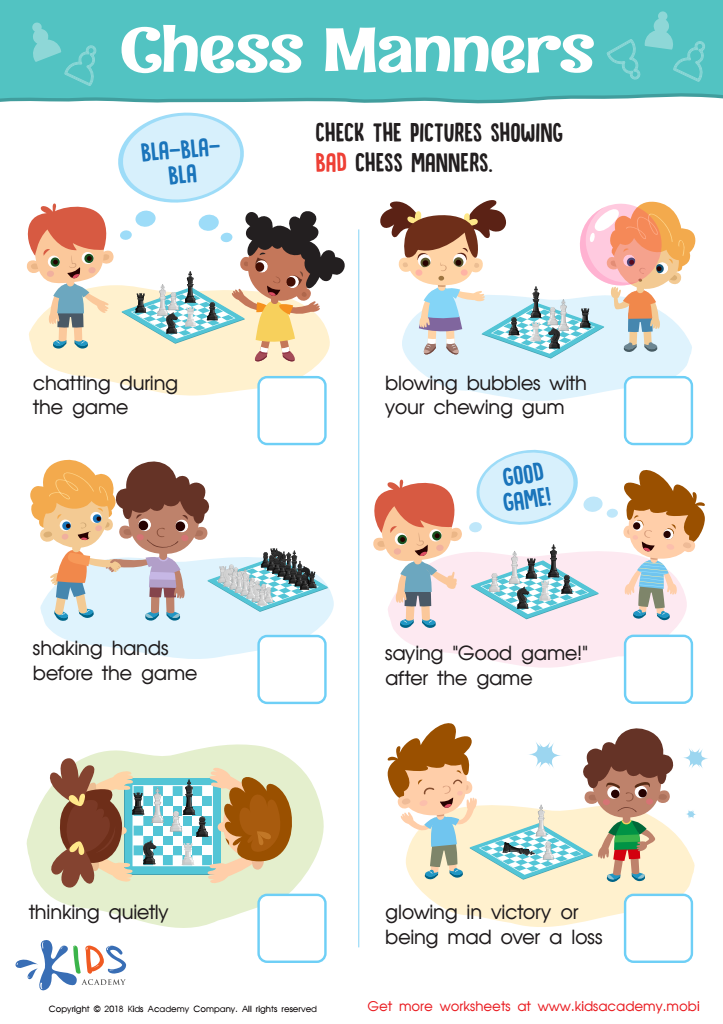

Chess Manners Worksheet
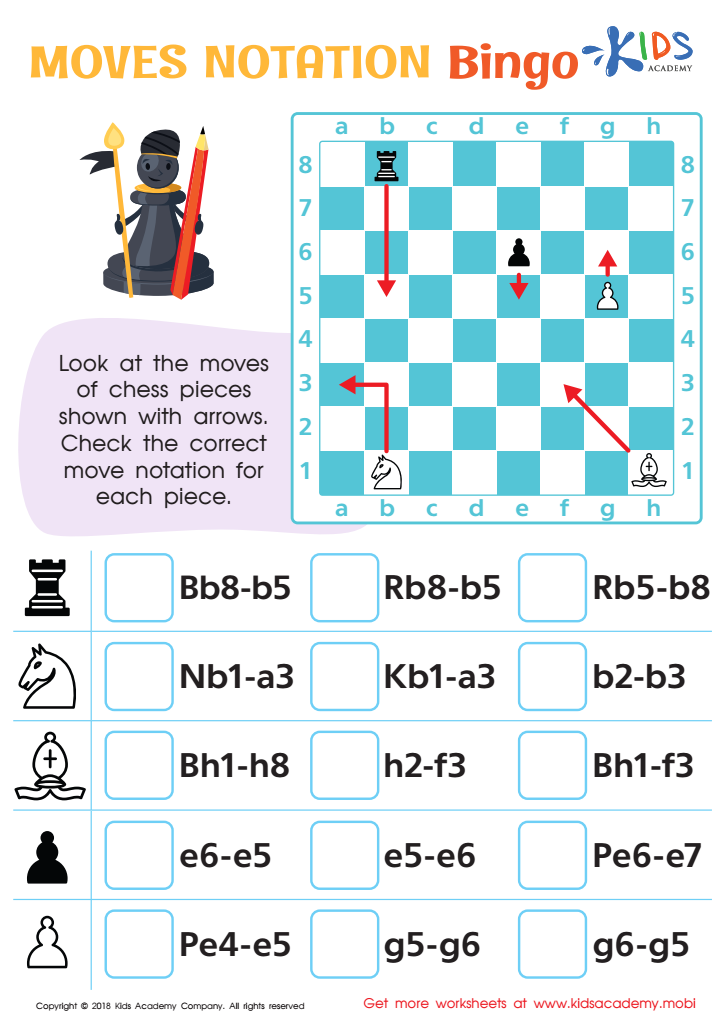

Moves Notation Bingo Worksheet
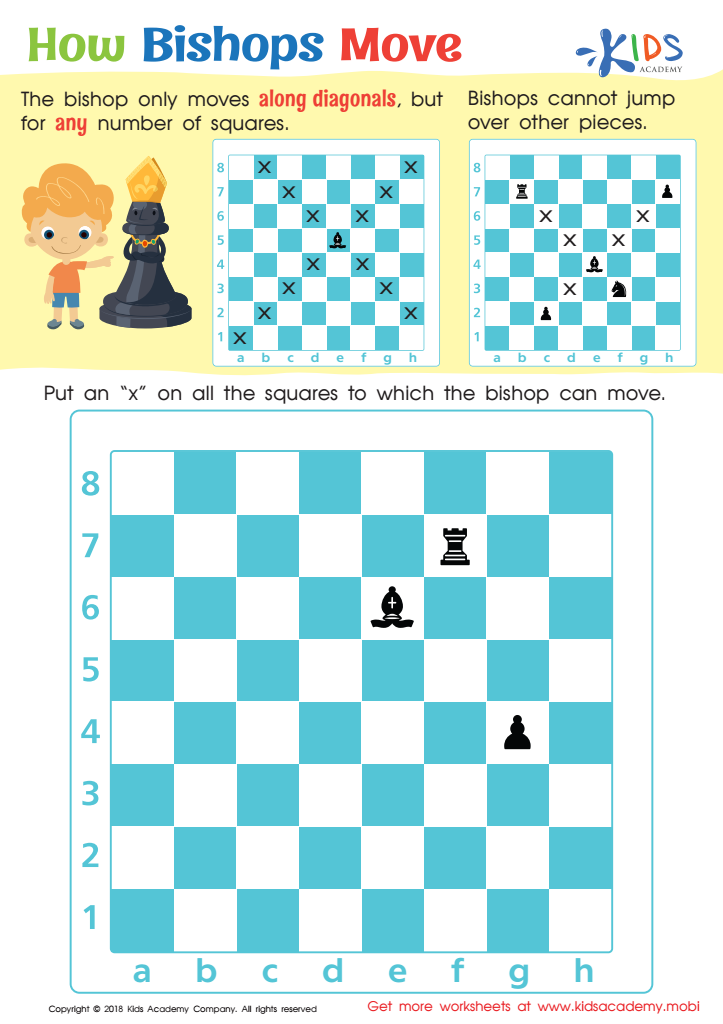

How Bishops Move Worksheet
Strategic thinking development in children aged 7-9 is essential as it lays the groundwork for critical life skills. At this age, children begin to understand more complex concepts and are capable of planning, problem-solving, and thinking ahead. By nurturing strategic thinking, parents and teachers can help children develop the ability to analyze situations, consider multiple perspectives, and make informed decisions.
Engaging children in activities that promote strategic thinking—such as games, puzzles, or group projects— encourages them to think critically and creatively. These skills are not only crucial for academic success but also for personal development. They enable children to set goals, assess risks, and evaluate outcomes, fostering resilience and adaptability.
Moreover, fostering this skill helps in the development of collaboration and empathy, as children learn to think about the needs and feelings of others when making decisions. By caring about and investing in strategic thinking, parents and teachers can prepare children for challenges they will face in school and beyond, instilling confidence and fostering a lifelong love for learning. Ultimately, this development leads to well-rounded individuals equipped to navigate the complexities of the world.
 Assign to My Students
Assign to My Students




